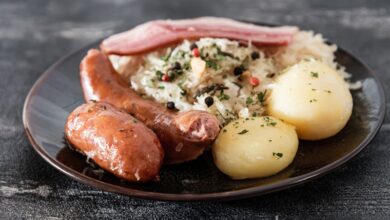Study: We’re brewing our coffee wrong
You’re brewing your morning coffee all wrong. That’s according to a new study published last week in the academic journal Matter.
It took scientists and mathematicians to discover the proper process and it has both home and retail coffee brewers rethinking their process. It’s an important study for many as coffee remains the number one drink in the United States.
In the study, “Systematically Improving Espresso: Insights from Mathematical Modeling and Experiment,” the study’s authors say coffee makers — both at home and in cafés — are using too many beans and coffee that is ground too much, which is resulting in “wasted raw material” and inconsistent flavor.
“With instruction from our model, we outline a procedure to eliminate these shortcomings,” the study says. The results can be applied not only to expresso but to regular coffee.
READ: Coffee central to ministry in South America
An espresso shot that uses fewer beans and a more coarse grind is how scientists claim consumers can eliminate waste and have more uniformity of flavor among shots while maintaining the strength of the coffee from a finer grind.
“Most people in the coffee industry are using fine-grind settings and lots of coffee beans to get a mix of bitterness and sour acidity that is unpredictable and irreproducible,” said study co-author Christopher Hendon, a computational chemist at the University of Oregon, Today reported. “It sounds counterintuitive, but experiments and modeling suggest that efficient, reproducible shots can be accessed by simply using less coffee and grinding it more coarsely.”
Hendon and the study authors claim their “novel brewing protocols,” which call for 15 grams instead of 20 grams of coffee per shot, would “decrease the mass of coffee used per espresso by up to 20 percent” and have a “significant economic impact and create a more sustainable coffee-consuming future.”
However, not everyone is ready to convert to the new practice.
“The best extraction practices are extremely dependent on the origin of the coffee bean,” Adam Budnick, a barista at Kettner Coffee Supply, told Today. “This includes the presence of lactic acid based on elevation, fermentation of the coffee bean husk or cherry and how the washing process affects the available sugars.”
Coffee remains America’s number one drink. While total coffee consumption in the United States has remained fairly flat in recent years, more Americans are regularly drinking gourmet coffees, cold brew and other specialized beverages compared to non-gourmet coffee, according to the latest National Coffee Association (NCA) annual report on coffee consumption.
The NCA has been releasing the report each year since 1950, providing a macro-level snapshot of U.S. coffee consumer behavior while amassing a wealth of data in the process. For 2019 NCA changed the name of the report from “National Coffee Drinking Trends” to “National Coffee Data Trends,” maintaining the long-running NCDT acronym.
The 2019 NCDT involved surveys with a nationally representative sample of 2,815 people who reported drinking a beverage other than water within the past day.
For the first time in the report’s 69-year history, gourmet coffee reached a 60/40 advantage over traditional non-gourmet coffee among past-day drinkers.
–Metro Voice







